Main menu
Common skin conditions

NEWS
Join DermNet PRO
Read more
Quick links
Potassium permanganate — extra information
Potassium permanganate
Author: Dr Ian Coulson, Consultant Dermatologist, Burnley, Lancashire, UK. April 2022.
What is potassium permanganate?
Potassium permanganate is an oxidising agent with disinfectant, deodorising, and astringent properties. Its chemical formula is KMnO4. It is sometimes called by its common name, Condy's crystals.
In its raw state, potassium permanganate is an odourless dark purple or almost black crystal or granular powder.
What is potassium permanganate used for?
A weak solution applied to the affected skin is useful to help dry up a wet, exudative dermatoses such as:
- Weeping eczema
- Impetiginised eczema
- Pompholyx
- Blistering skin conditions such as pemphigoid.
Permanganate solution was a traditional treatment for fungal infections, but topical azoles (e.g. clotrimazole) and allylamines (e.g. terbinafine) are more effective and cosmetically acceptable.
How is the topical potassium permanganate solution prepared?
Potassium permanganate is dispensed as either:
- Crystals for dissolving in water
- A concentrated solution (1 in 100) to be further diluted 100 fold to its working concentration
- Tablets (Permitabs) that contain 400 mg of potassium permanganate. One tablet is completely dissolved in 4 L of warm water.
Important notes on preparation:
- All will require dilution with warm water to a final use concentration of 1 in 10,000
- Mixing should be performed with a gloved hand to help facilitate the dilution or dissolve the tablet completely before use.
- The final solution should be a light pink colour.
- The solution and tablets should be stored securely out of reach of children
Potassium permanganate must never be taken internally as it is highly toxic. Do not eat or drink when handling the product.
How is potassium permanganate used?
- Potassium permanganate crystals and concentrated solutions are caustic and can burn the skin.
- It must only ever be applied in the dilute form to affected skin.
- Always wear gloves when handling the concentrated solution or tablets.
- The affected area can be immersed in the dilute solution for 10–20 mins, twice a day.
- After the soak, the affected area can be patted dry with a paper towel, and treatments like topical steroid creams can then be applied.
- Vaseline can be applied to the nails to prevent the permanganate causing brown staining.
- Two to three days of applications will usually dry the weeping eruption, and the soaks can be discontinued before the skin becomes over dry.
- If a foot or hand is affected, the diluted permanganate solution can be put into a bowl or bucket with a plastic bag liner that can be discarded after use.
- If the weeping rash is widespread, permanganate can be diluted in bath water and the whole of the body immersed.
- If the weeping area is more localised, diluted permanganate can be applied on a gauze soaked in diluted permanganate that has been gently squeezed to remove excess solution, and applied to the affected area for 20 minutes.
- Potassium permanganate soaks are not suitable for dry skin conditions.
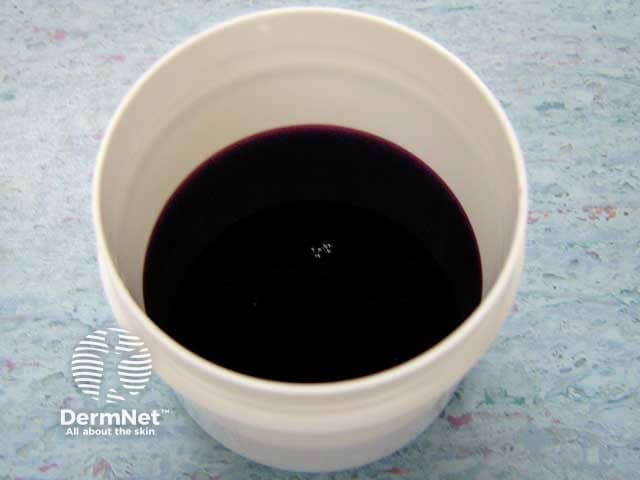
Concentrated potassium permanganate solution
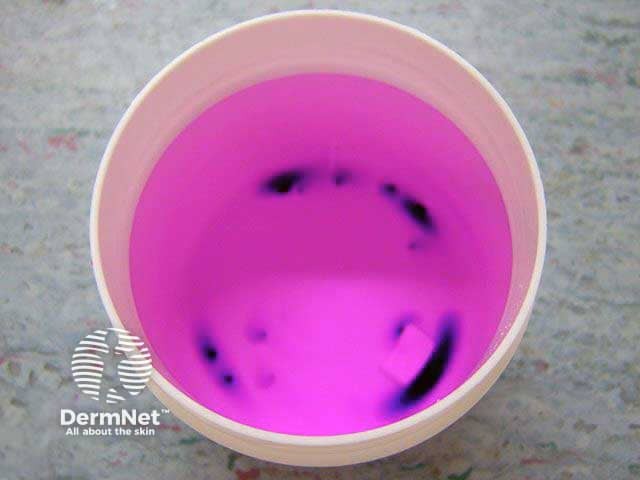
Diluted potassium permanganate - follow manufacturer instruction.
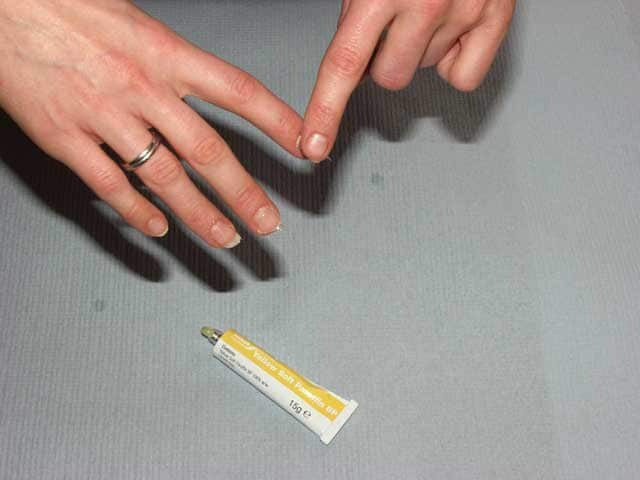
Yellow soft paraffin can be applied to the nails to prevent staining
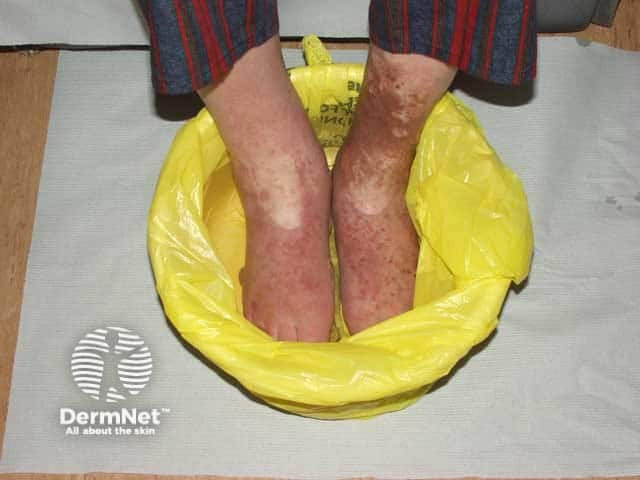
Soaking in diluted potassium permanganate solution (KMnO4-patient1)
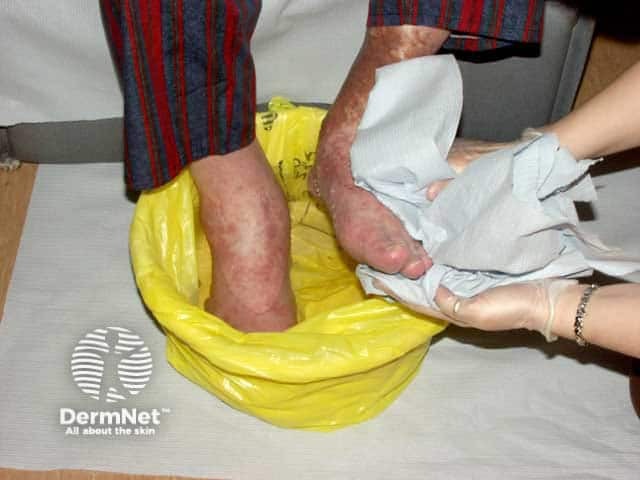
Patting the soaked foot dry prior to applying a steroid cream (KMnO4-patient1)

Nail staining from potassium permanganate soaks
Note that potassium permanganate may leave a brown stain on skin and nails as well as clothing. Use nail varnish or by apply soft paraffin to fingernails and toenails before treatment. Potassium permanganate can also stain the bath or vessel holding the solution, and ceramic sanitary ware; a consideration when disposing of the solution.
Approved datasheets are the official source of information for medicines, including approved uses, doses, and safety information. Check the individual datasheet in your country for information about medicines.
We suggest you refer to your national drug approval agency such as the Australian Therapeutic Goods Administration (TGA), US Food and Drug Administration (FDA), UK Medicines and Healthcare products regulatory agency (MHRA) / emc, and NZ Medsafe, or a national or state-approved formulary eg, the New Zealand Formulary (NZF) and New Zealand Formulary for Children (NZFC) and the British National Formulary (BNF) and British National Formulary for Children (BNFC).
References
- Book: Textbook of Dermatology. Ed Rook A, Wilkinson DS, Ebling FJB, Champion RH, Burton JL. Fourth edition. Blackwell Scientific Publications.
- Eczema. Starship Children’s Health Clinical Guideline
On DermNet
Other websites
- Drugs, Herbs and Supplements — MedlinePlus
